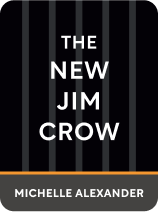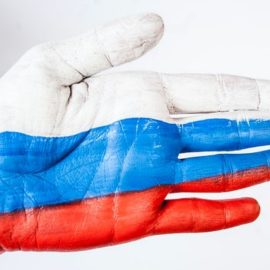

This article is an excerpt from the Shortform summary of "The New Jim Crow" by Michelle Alexander. Shortform has the world's best summaries of books you should be reading.
Like this article? Sign up for a free trial here .
What is the history of the war on drugs? How does the war on drugs history explain the current state of mass incarceration?
The history of the war on drugs is related to the issue of mass incarceration. There are race-based differences in the policing of drug issues.
Keep reading for a better understanding of the history of the war on drugs and the role of drug laws in racial disparities in incarceration.
Repeating History: The War on Drugs
The pattern shown centuries earlier is repeated in the 1960s and the history of the war on drugs, creating the New Jim Crow lasting to the present day.
1) White elites committed to racial hierarchy worry about a threat to the social order.
- World War II highlights a contradiction between opposing Nazi racial persecution and continued racial segregation in the US. You can’t fight the Nazis on grounds of racial equality while also segregating in the United States.
- There is also concern that blacks without equality would become susceptible to communist ideals.
- In 1954 Brown vs Board of Education abolishes “separate but equal,” to much outrage in the South.
- The Civil Rights Movement in the 60s leads to the Civil Rights Act of 1964 and Voting Rights Act of 1965, which reduce discrimination in employment, education, and voting.
- Realizing the depth of the poverty trap, civil rights activists attack discrimination in economic opportunities, looping in poor working-class whites who face similar issues.
2) They devise a new method of enforcing racialized social control.
- Whatever the method was, it now has to be race-neutral and cannot involve explicit racial discrimination.
- The solution is “law and order” and “cracking down on crime.”
- This rhetoric started in the 1950s condemning actions of the more militant civil rights activists. Riots, like those following the assassination of MLK, fuel this image. Supporting racial integration is cast as condoning lawlessness.
- Incidentally, the FBI reports increases in crime in the 1960s. The author argues this is due in large part to the baby boom generation, since most crimes are committed by the 15-24 age group. But advocates of cracking down on crime use this to increase the urgency of their messaging.
- The rhetoric has clear racial undertones – says WV senator, “if [blacks] conduct themselves in an orderly way, they will not have to worry about police brutality.” The race-based differences continue to be seen in the history of the war on drugs.
3) They collapse resistance across the political spectrum, largely by appealing to the vulnerability of lower-class whites.
- Lower-class whites bear a larger cost of integration since they compete with blacks for jobs and status. (The wealthy white liberals who support integration are criticized as “sheltered” from the costs of integration and out of touch.) They oppose integration, are frustrated with the Democratic party’s support of civil rights, and flock to the Republican party.
- Even black activists join the call for “law and order,” shielding conservatives from accusations of racial discrimination – say conservatives, “if we have black support, we can’t possibly be racist.”
- Reagan continues the rhetoric on criminal “predators” and “welfare queens,” all in implicitly racial language.
4) The system becomes institutionalized and pervasive, as stakeholders pursue their own incentives and rationalize their behavior.
- In 1982, Reagan is the start of the history of the War on Drugs, even though less than 2% of the American public view drugs as the most important issue. In 1989, this has risen to 64%.
- Crack cocaine reaches its height in 1985, ravaging urban neighborhoods affected by outsourcing of manufacturing jobs.
- Federal antidrug funding grows by a literal 10x in the FBI, DoD, and DEA over a decade, while funding for substance abuse counseling is cut.
- The DEA supports media campaigns for the crack epidemic. The media are happy to oblige since this is the “hottest combat reporting since the end of the Vietnam War.”
- Racially coded language about “crack whores” and “gangbangers” reinforce stereotypes of lazy welfare queens and black criminal predators.
- Politicians campaign on promises of being tough on crime and drugs, motivated by the desire to win and appealing to constituents.
- With the media rage, few politicians dare to stand against “cracking down on crime.” Instead, they scramble over each other to seem the harshest against crime. (This had also occurred during Jim Crow segregation, with some politicians proposing legislation against integrated chess playing.)
- With the Anti-Drug Abuse Act of 1986, mandatory minimum sentences are passed. Punishments are more severe for crack (associated with blacks), requiring 5g of possession, vs 500g of powder cocaine (associated with whites). More civil penalties are passed.
- The history of the war on drugs continues with every administration after Reagan.
- Judges and the Supreme Court uphold legality of police activities like pretext stops and barring evidence of discrimination from being considered in court (eg McCleskey v Kemp). These are likely primarily out of case precedent and not explicitly politically biased.
- But it’s hard not to think they were at least a little influenced by the zeitgeist of the day, the government mandate for war on crime.
- Lower courts then have to follow the case law and strike down attempts to claim discrimination in court.
The history of the war on drugs is complex and had significant consequences.

———End of Preview———
Like what you just read? Read the rest of the world's best summary of Michelle Alexander's "The New Jim Crow" at Shortform .
Here's what you'll find in our full The New Jim Crow summary :
- How the US prison population increased 10x in 30 years because of harsh drug policies
- How being "tough on crime" was deeply motivated in discrimination against black people
- Why being convicted for a crime is essentially a life sentence of poverty and return to prison






